Installation of version 2.7.7
PREREQUIREMENTS:
It is important to have a separate mounted volume, /vid-app and to have sufficient space -100Gb minimum, in this location on each node.
It is necessary to have already deployed the VeridiumID persistence servers.
These packages need to be preinstalled on ILP and VeridiumID persistence machines:
## install on ILP
yum -y install java-17-openjdk bc chrony logrotate libffi-devel bzip2-devel xz-devel openssl-devel pcre-devel systemd-devel zlib-devel dmidecode curl unzip wget rsync net-tools jq rng-tools python3-pip python3-pyyaml python3-jinja2 make gcc
## install on VeridiumID persistence:
yum -y install bc python3-pyyaml python3-jinja2 libffi-devel dmidecode curl unzip wget rsync net-tools jq rng-tools make gcc1) Download UBA installer on the machine we want to start the installation.
Please check if you have enough space (df -h). The zip file has 5.8GB and uncompressed 7.9GB.
TMP_DEST="/vid-app/install277"
##in case does not exists, please create the folder and assign ownership on this folder to deployment user:
sudo mkdir -p $TMP_DEST && sudo chown $(whoami):$(whoami) $TMP_DEST && sudo chmod 755 $TMP_DEST
## ILP is installed under /vid-app folder, that should be mounted and there should be at lease 100Gb on Webapp and also on persisntence.
wget -P $TMP_DEST --user nexusUser --password nexusPassword https://veridium-repo.veridium-dev.com/repository/UBAInstallerOnPrem/2.7.7/uba-onprem-installer-2.7.7.zip
unzip ${TMP_DEST}/uba-onprem-installer-2.7.7.zip -d ${TMP_DEST}2) Generate a ssh key to do the installation:
##On the server, where the installation is started, generate a ssh key and copy it to all servers
ssh-keygen
cat ~/.ssh/id_rsa.pub
vi ~/.ssh/authorized_keys3) Configure variable file (only modified the following values):
vi ${TMP_DEST}/uba-onprem-installer/variables.yaml
SSH_USER: <the user for which you have generated the ssh key>
WEBAPP_CONTACT_POINTS: IP1,IP2
PERSISTENCE_CONTACT_POINTS: IP3,IP4,IP5
# if the certifiate is for domain: *.ilp.veridium-dev.com, this should be the format in the document:
CLUSTERSUFFIX: ilp.veridium-dev.com
DOMAINSEPARATOR: "."
# take the datacenter name from nodetool status, from cassandra
CASSANDRA_DATACENTER: "dc1"
UBA_VERSION: "2.7.7"4) Start the installation process:
cd ${TMP_DEST}/uba-onprem-installer
# check if the prereq are installed
./check_prereqs.sh
# start the installation process
./uba-installer.sh
## after the installation, please run below command on UBA Webapp and VeridiumId persistence nodes, to be sure that everything is successfully installed:
sudo bash /opt/veridiumid/uba/scripts/uba_check_services.sh
5) Generate a tenant for veridiumid-server, with a random uuid (ONE TIME).
chown veridiumid.veridiumid -R /vid-app/ilpdata/
# connect as veridiumid user:
sudo su - veridiumid
TMP_DEST="/vid-app/install277"
# use the `uuidgen` as parameter for the following script (if case of non-cdcr deployments)
bash ${TMP_DEST}/uba-onprem-installer/generate_tenant_platform.sh `uuidgen`
# use the `uuidgen` as parameter for the following script (if case of cdcr deployments)
bash ${TMP_DEST}/uba-onprem-installer/generate_tenant_platform_cdcr.sh `uuidgen`If you already have a tenant ID, you can run the script with it directly instead of generating a new one:
# connect as veridiumid user:
sudo su - veridiumid
TMP_DEST="/vid-app/install277"
# use the tenantId as parameter for the following script (if case of non-cdcr deployments)
bash ${TMP_DEST}/uba-onprem-installer/generate_tenant_platform.sh <your-tenant-id>
# use the tenantId as parameter for the following script (if case of cdcr deployments)
bash ${TMP_DEST}/uba-onprem-installer/generate_tenant_platform_cdcr.sh <your-tenant-id>To test if the initialisation was successfully, go to a persistence-node, in cqlsh and check the following tables if they have data:
use uba;
expand on;
select * from tenants;
# should contain one entry, the tenant we registered
select * from global_model_latest_with_tenant;
# should contain one entry, the global context model
select count(1) from features_ordered_by_time;
# should contain 100+ entries, wait until the count doesn’t change then start doing authentications
optional - Configure the integration of veridiumid-server with UBA cluster:
You should configure the following entries in the main load-balancer to balances traffic to the two UBA webapp machines. Example configuration for a HAProxy balancer:
frontend uba_webapp_443
bind *:443
mode tcp
tcp-request inspect-delay 5s
tcp-request content accept if { req_ssl_hello_type 1 }
use_backend backend_uba
backend backend_uba
mode tcp
balance leastconn
stick match src
stick-table type ip size 1m expire 1h
option ssl-hello-chk
option tcp-check
tcp-check connect port 443
server webappserver1 10.203.90.3:443 check id 1
server webappserver2 10.203.90.4:443 check id 2
Where 10.203.90.3 is the IP of UBA machine1 and 10.203.90.4 is the IP of UBA machine2.
7) Integration the UBA with VeridiumID application
On the webapp machines of veridiumid-server (on each machine), we need to add the following lines in /etc/hosts file, where the IP is the load balancer IP in front of ILP services or directly one ILP webapp node.
## edit /etc/hosts
10.203.90.3 tenant.ilp.veridium-dev.com
10.203.90.3 ingestion.ilp.veridium-dev.com
10.203.90.3 users.ilp.veridium-dev.com7.1) Login to WebSecAdmin go to Settings → ILP Settings and config as per below example
Enabled: (ON)
UBA CLUSTER SUFFIX: in our case will be “
CLUSTERSUFFIX" from variables.yamlUBA Subdomain Separator: in our case will be “
DOMAINSEPARATOR“ from variables.yamlTenant Id*: in our case will be your tenant id or the uuid you generated in step 5.
Use Compact Inference: (ON)
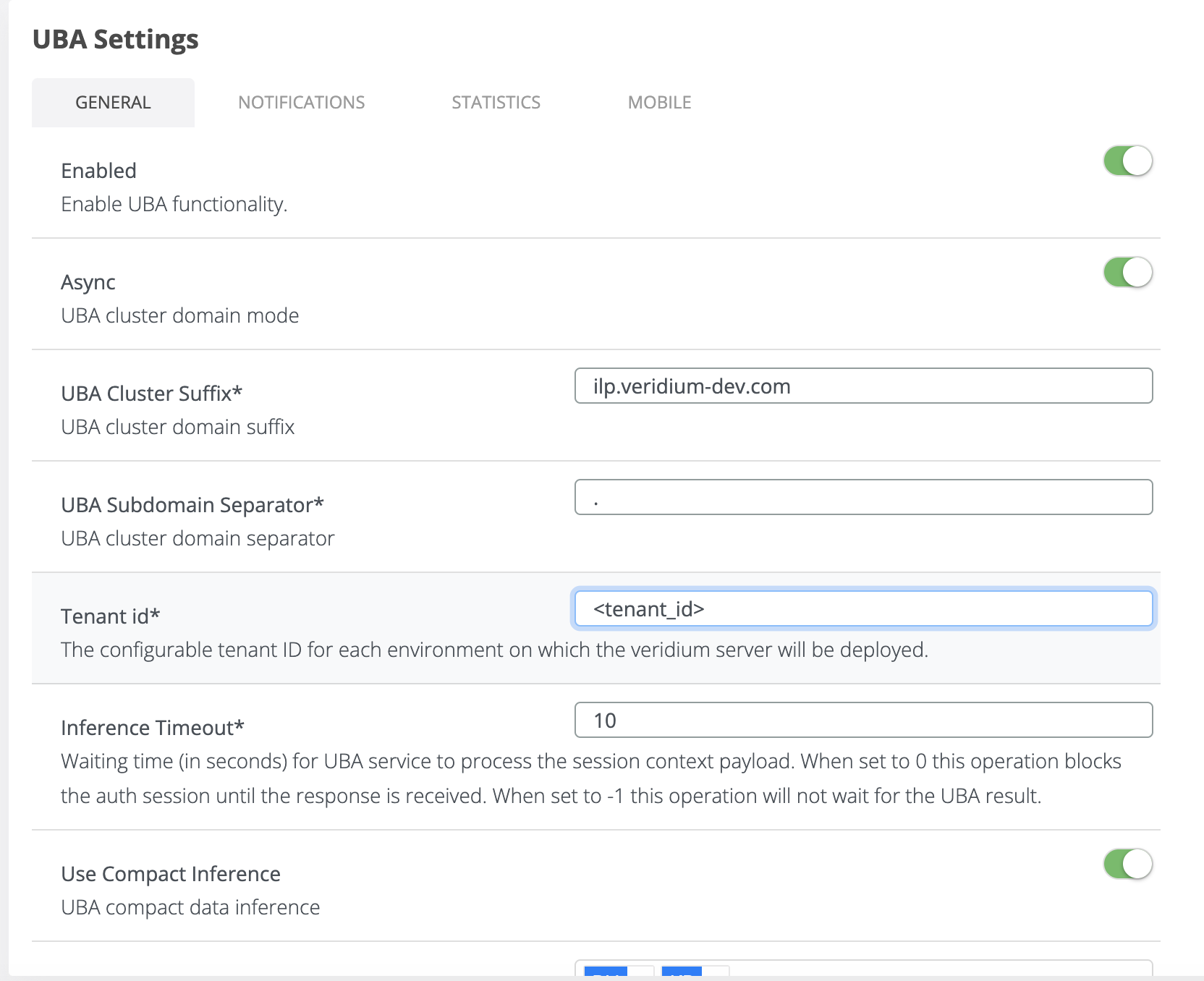
Set an username and a password in Statistics section - this is a bug that this fields are mandatory. Please setup a dummy value, as are not used anymore.
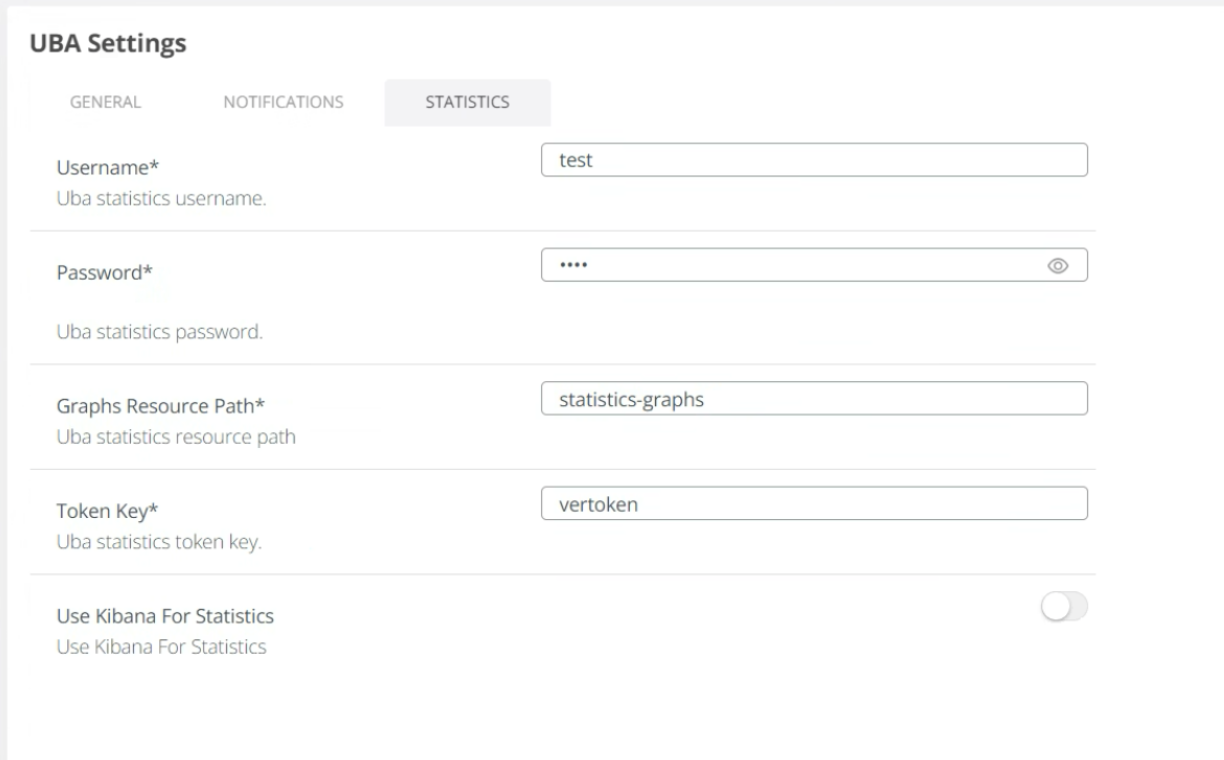
Set Allow UBA data to go through mobile → ON
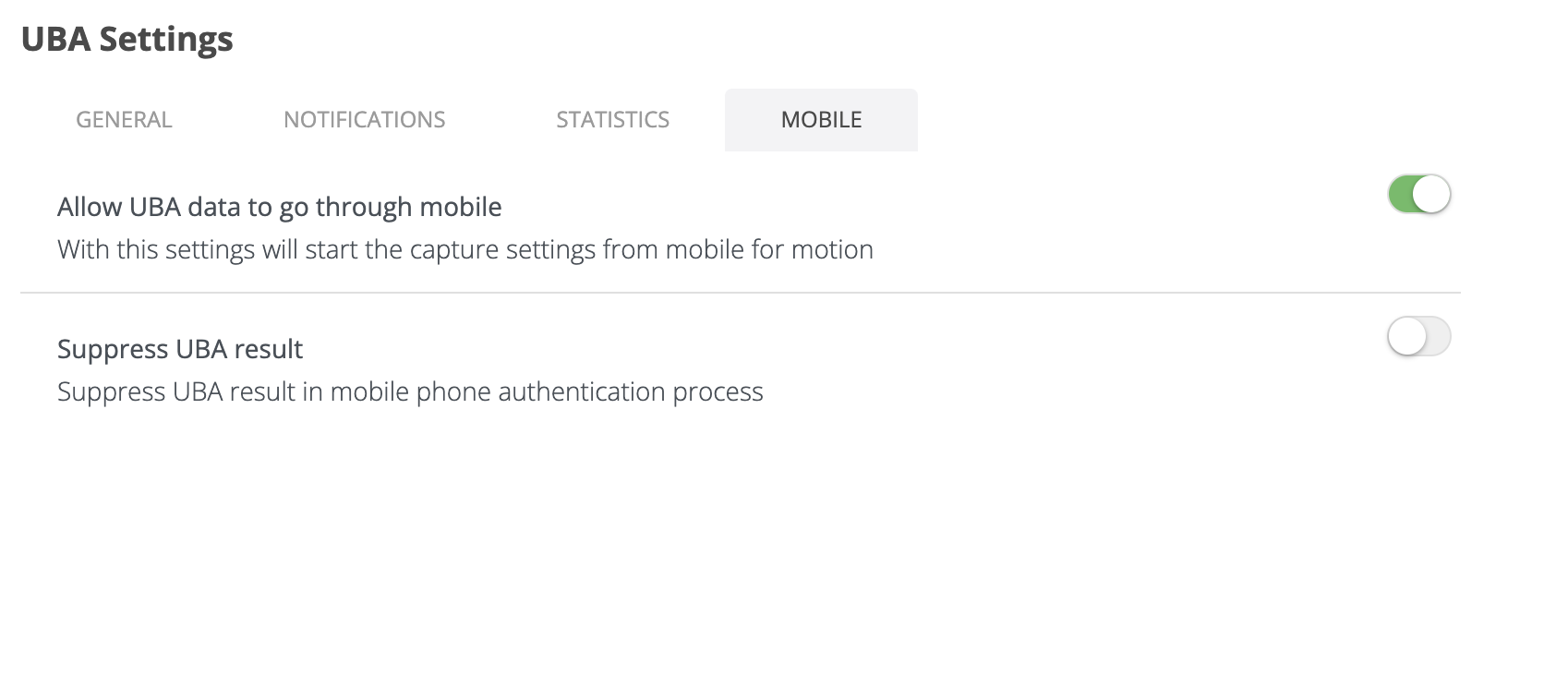
7.2) Check in the journey you are using if uba_command_motion and uba_command_context are enabled.
Click on Orchestator
Click on Journeys
In the Journey Name, select the active one and click on Edit button:

Check if uba_command_motion and uba_command_context are in the Challenge section:
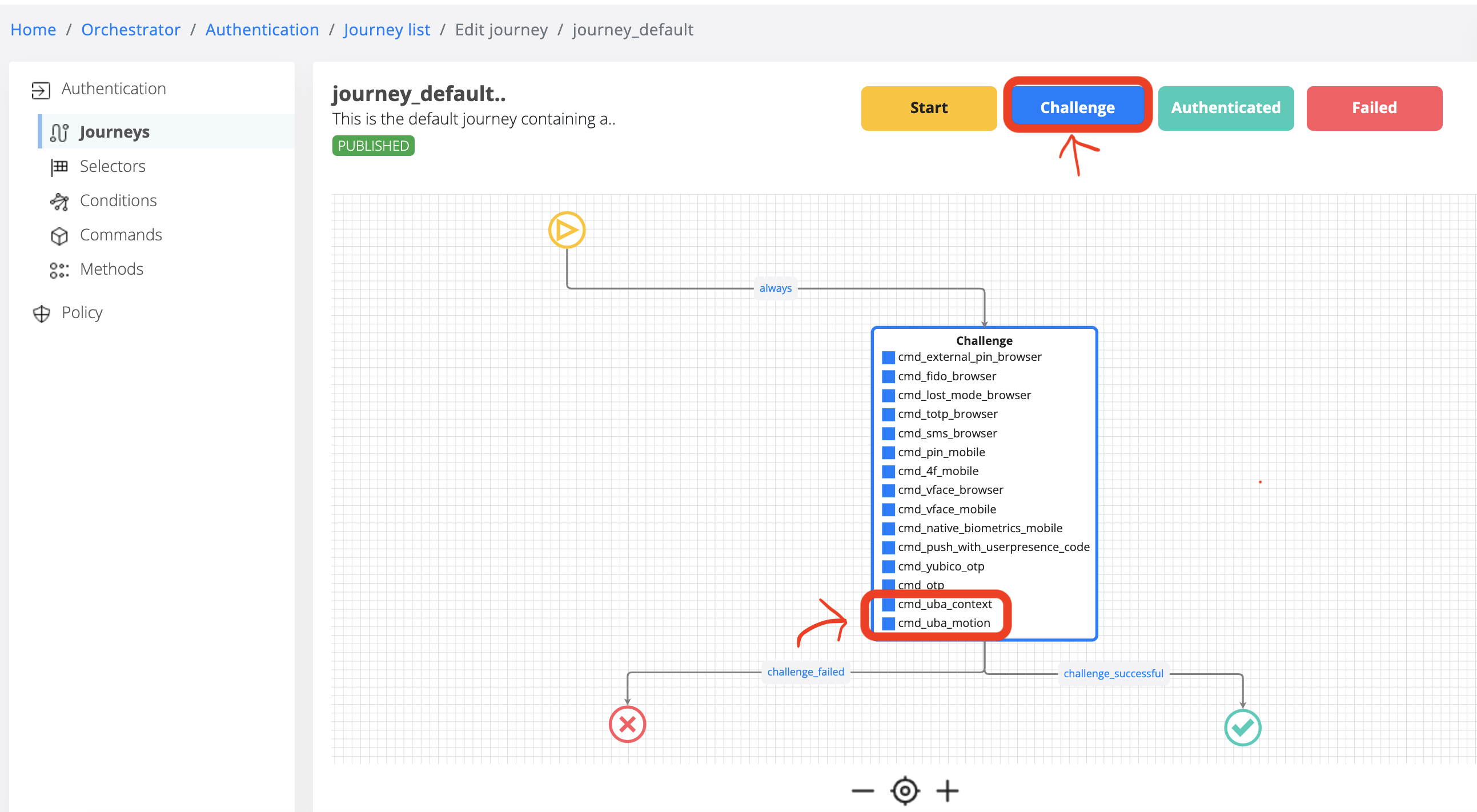
If uba_command_motion and uba_command_context are not enabled, please add in the Commands section and Save.
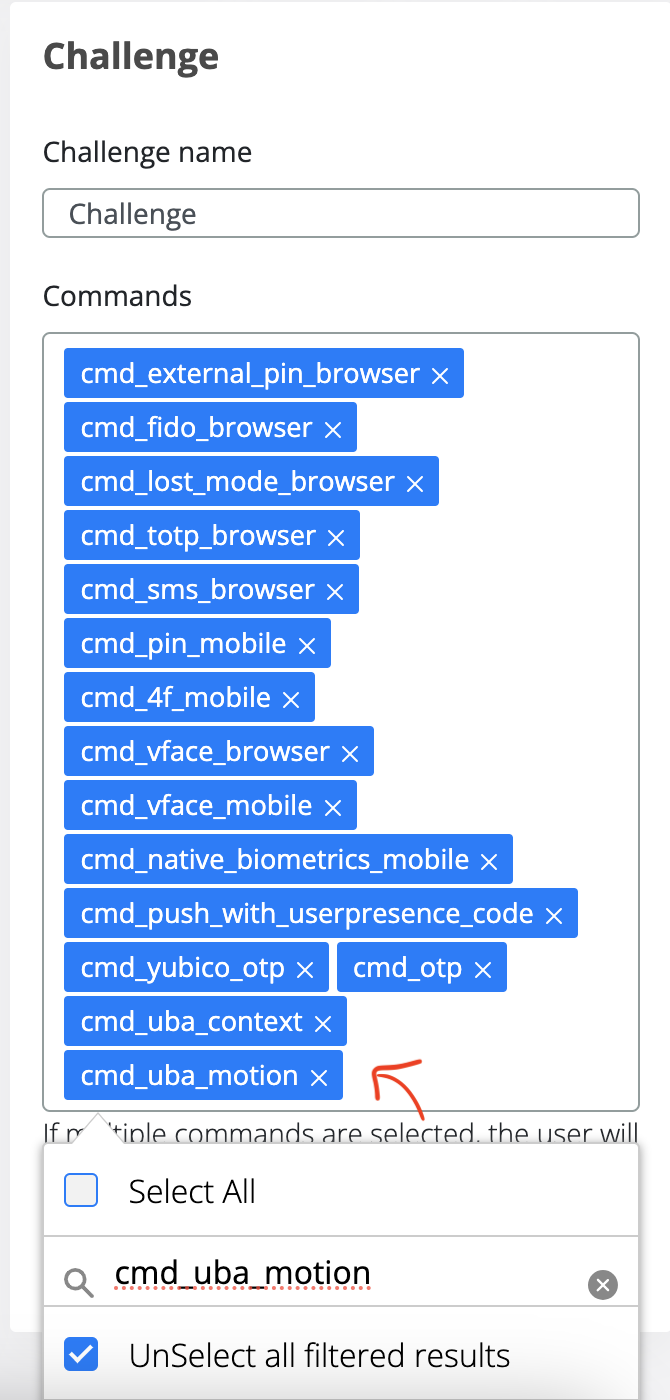
7.3) Configure proxy (if you are using one - OPTIONAL) in WebsecAdmin (Settings → Advanced → proxy-config.json) to maintain the traffic internally (where ilpdevelop.veridium-dev.com is the domain you are using for UBA)
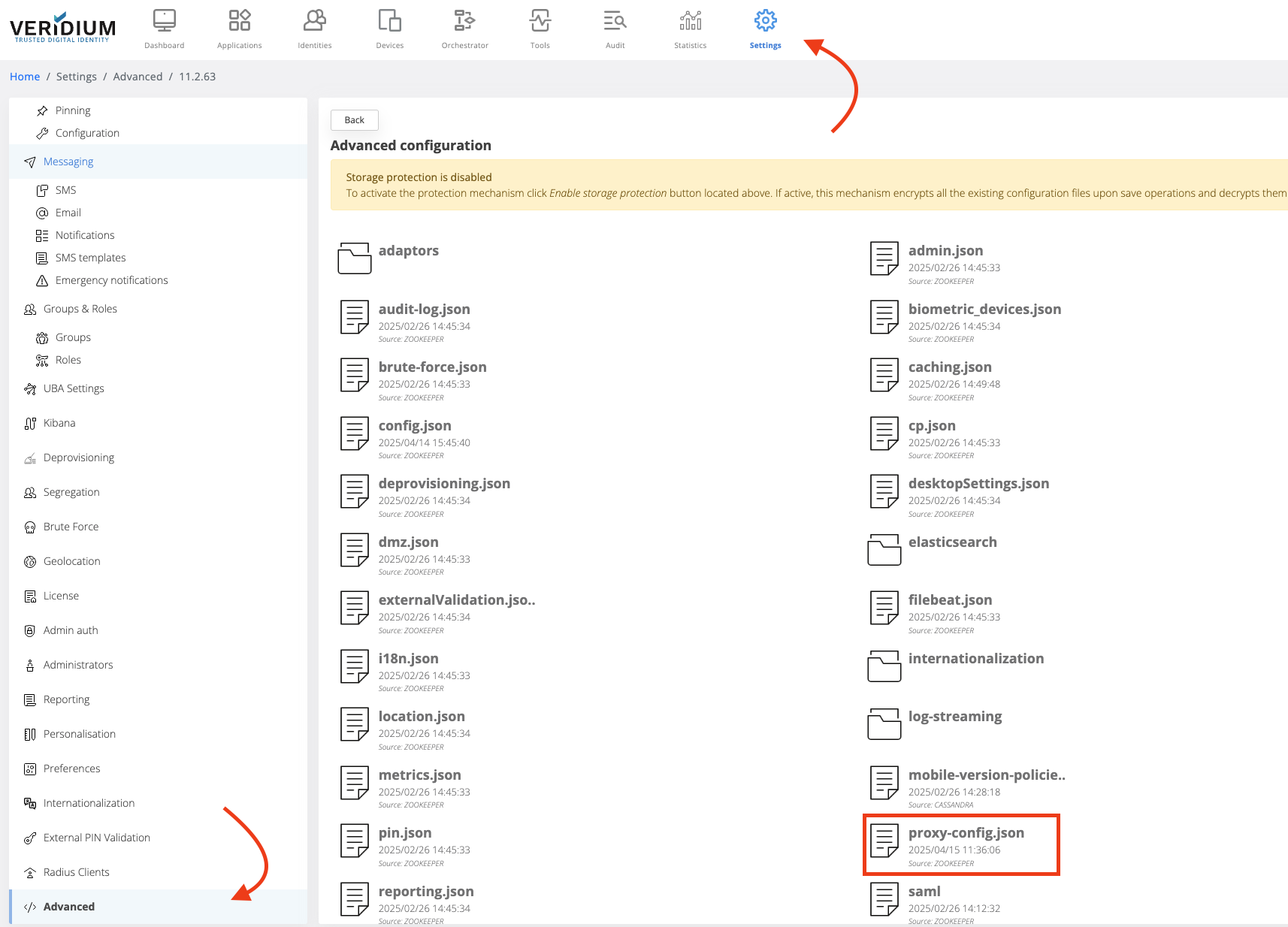
## proxy-config.json, such an entry, to keep the traffic internally
"nonProxyHttpsHosts": "localhost|ilpdevelop.veridium-dev.com|api.twilio.com|*ilpdevelop.veridium-dev.com|*.ilpdevelop.veridium-dev.com"7.4) restart tomcat:
systemctl restart ver_tomcat 7.5) Go to SSP Login Page and do 11 logins and you will see score for Motion / Content in Activity. After 4 authentications you should receive a context score, and after 11 authentications you should receive a motion score as well.
Useful commands for troubleshooting
Start/stop services:
## run the following command to see if everything is running:
uba_check_services
## check if kafka is running:
uba_check_kafka
## stop/start UBA services:
uba_stop
uba_start
## stop/start a specific service (e.g.: uba-kafka)
systemctl stop uba-kafka
systemctl start uba-kafkaLog location
## veridium logs on Webapp VeridiumId servers
/var/log/veridiumid/tomcat/bops.log
## uba logs location on ILP nodes
/var/log/veridiumid/uba/<service_name>.log
##
grep DURATION /var/log/veridiumid/tomcat/bops.log
grep SESSION_ID /var/log/veridiumid/tomcat/bops.log
Troubleshooting commands:
## run this on Webapp VeridiumId servers
ping tenant.FQDN
## check connectivity
nc -zv tenant.FQDN 443
## curl
export https_proxy=""
curl https://tenant.FQDN:443
If you want to run UBA on the same machine as VeridiumID, you should edit the haproxy config using these commands:
vi /etc/veridiumid/haproxy/haproxy.cfg
frontend frontend-https
bind *:443
mode tcp
...
...
use_backend backend_uba if { req_ssl_sni -i ingestion.dev58.veridium-dev.com }
use_backend backend_uba if { req_ssl_sni -i tenant.dev58.veridium-dev.com }
use_backend backend_uba if { req_ssl_sni -i users.dev58.veridium-dev.com }
backend backend_uba
mode tcp
server uba_frontend 127.0.0.1:6443
frontend ingestion
bind 127.0.0.1:6443 ssl crt /etc/veridiumid/haproxy/server.pem alpn h2,http/1.1
mode http
acl uba_ingestion ssl_fc_sni -i ingestion.dev58.veridium-dev.com
acl uba_tenant ssl_fc_sni -i tenant.dev58.veridium-dev.com
acl uba_users ssl_fc_sni -i users.dev58.veridium-dev.com
use_backend backend_uba_web_ingestion if uba_ingestion
use_backend backend_uba_web_tenant if uba_tenant
use_backend backend_uba_web_users if uba_users
backend backend_uba_web_ingestion
balance roundrobin
server server1 127.0.0.1:8220 check id 1 proto h2
backend backend_uba_web_tenant
balance roundrobin
server server1 127.0.0.1:8120 check id 1 proto h2
backend backend_uba_web_users
balance roundrobin
server server1 127.0.0.1:8200 check id 1 proto h2
sudo systemctl restart ver_haproxy